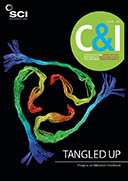Stimulating Polymers
Reviewer
Terry Crosgrove
Stimuli-responsive materials – from molecules to nature, mimicking materials design, Author Marek W. Urban, Publisher RSC Publishing, Year 2016, Pages 488, Price £79.99, ISBN 978-184-973-6565
Stimuli-responsive materials are now an intrinsic part of our everyday life – even if we didn't know it. They make possible many of the advanced features in devices we take for granted. Some examples are the fingerprint recognition on a mobile phone; the paper strips that diabetics use to test their sugar levels; the surface coatings used on solar cells to keep them clean; and targeted anti-cancer therapies.
One common theme in these materials is that most of them are based on synthetic polymers, which can be attached to surfaces and through subtle chemical modifications can bring about a desired response to say pH, temperature, enzyme activity, toxic metals, radiation – the list is very long.
Polymers have unique physical properties – they can act as viscosity and modulus modifiers, some are natural adhesives and can be used in pressure-sensitive and removable labels, others have non-adhesive properties and can be used, for example, in non-stick frying pans. Polymers can also be combined with self-assembly systems, nanoparticles and interfaces through chemical and physical interactions. In this way, we can make coatings, which are surface-sensitive to radiation, chemical attack etc, and bulk materials - such as tablets - which are sensitive to moisture, pressure, electric fields. Again, there is an endless range of different stimuli and different applications.
Some more recent research ideas include self-healing systems where, for example, wound dressing could reseal a wound if it started to weep. There are also `memory systems' where a futuristic design is programmed into a material and then it is prefabricated into a more pedestrian shape. After a time, as fashions change, the product could be made to revert to the first design.
Although this is a rapidly changing and vast field, there are few books that encompass all the basic aspects of this area – covering the relevant physical, biological, medical and engineering sciences. This book by Marek Urban runs to nearly 500 pages and was derived from an undergraduate/graduate course in materials science at Clemson University in South Carolina, US. Urban attempts to cover a very wide range of background material on polymers, polymerisation, polymer brushes and self-assembly. At an introductory and descriptive level, he succeeds; however, the detail provided would be insufficient for students studying polymer science in depth because some areas, such as the kinetics and thermodynamics of polymer systems, are treated too generally. Two omissions are the lack of any phase diagrams and a detailed discussion of polymer adsorption from either a practical or theoretical point of view – these subjects are central to understanding responsive materials.
The book, however, does give a detailed catalogue of polymers that interact with different stimuli, including temperature, but only the lower critical solution temperature is mentioned, and magnetic fields. Other stimuli-responsive systems are dealt with in later chapters and include nanoparticles, gels, vesicles and surface coatings in combination with polymer modification.
The book is well written and discusses many of the areas of the subject in a qualitative manner with virtually no mathematics, which could appeal to audiences wanting to get a more general introduction to the area. There are a plethora of illustrations, which on the whole are very clearly presented, though the detail in some of them suggests they were designed more for lecture projection than a book and, as such, I found some of the legends rather brief.
On balance, I think this is a very useful and timely book for a field that will continue to find new and exciting applications. Although specifically designed for a complete course in this area, students working on interfacial and polymeric systems will find many interesting examples of where they could apply their research.
Terry Cosgrove is an emeritus professor of chemistry at Bristol University, UK.
The best way to keep up to date with all of the latest, cutting edge technologies from the lab to the market!
Author
Publisher
Pages
Price
ISBN





